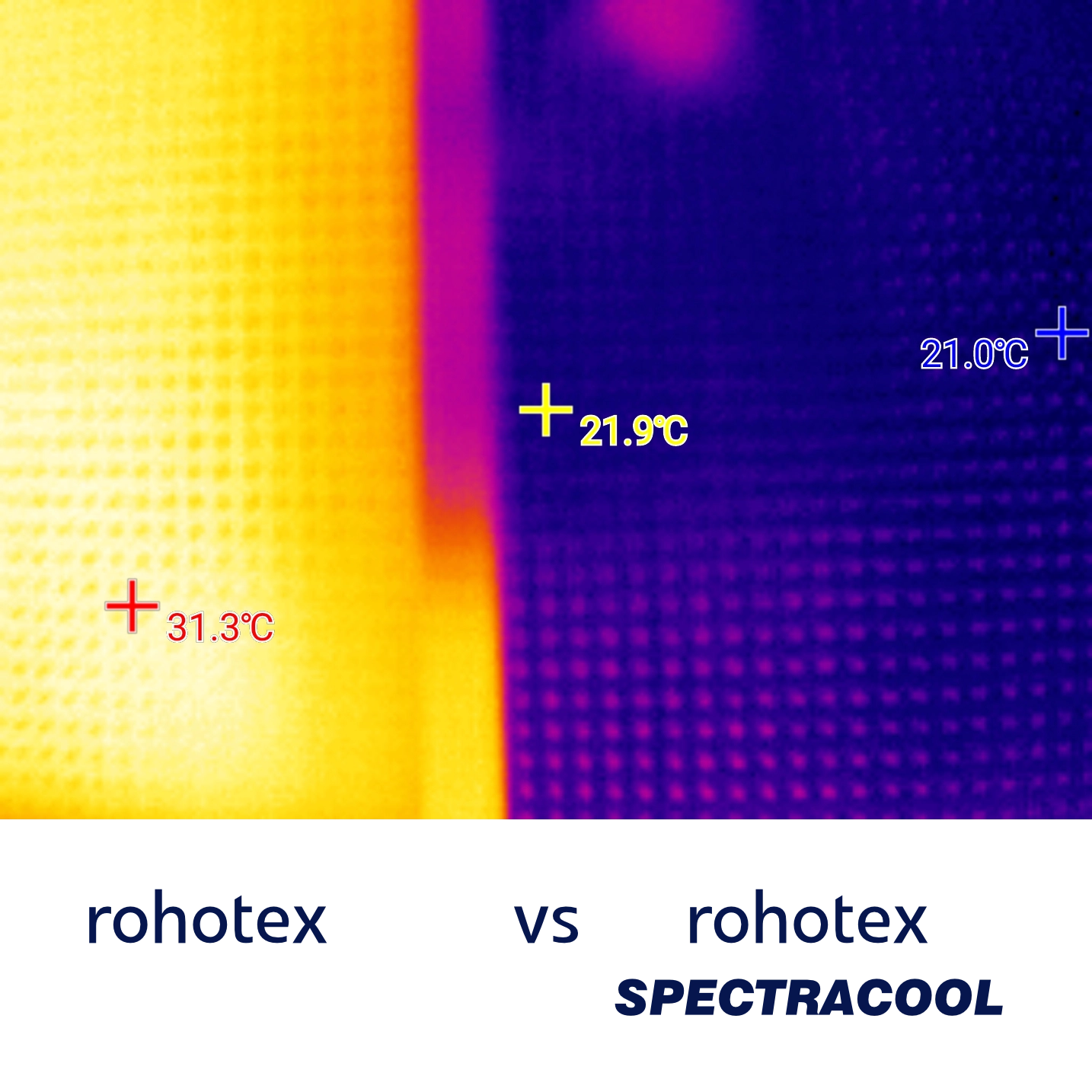Passive cooling of buildings with textile facades without using any energy.

The International Energy Agency estimates that cooling systems are responsible for 15% of global electricity consumption and 10% of greenhouse gas emissions. The demand for building air conditioning is expected to continue increasing, with global cooling needs tripling since 1990.
According to the International Energy Agency (IEA), building air conditioning is projected to account for 37% of the total energy demand in 2050.
A simple transition to renewable energies such as wind and solar power will not be sufficient to meet the energy demand. The solution developed by roho results in a reduction in electricity consumption for building air conditioning. Investing in Spectracool technology provides a lasting advantage.
Passive cooling methods for buildings will be crucial. Textile facades, especially in warm regions, are a key technology for energy-free building air conditioning.
A textile facade is a complete and permanent covering of a building using technical fabric, also known as a climate envelope or bioclimatic facade. The operating principle is simple yet ingenious, allowing building air conditioning without the need for energy. The entire system is practically maintenance-free, creating a natural and healthy indoor climate. The fabrics are transparent, allowing them to be installed above windows without significantly affecting the view.
This innovative textile facade technology will revolutionize the field of architecture and contribute to climate preservation. Under the name rohotex-Spectracool, the company has developed a textile facade fabric capable of neutralizing the infrared rays responsible for uncomfortable heat.
The efficiency of this cooling effect depends on various factors, including the angle of sunlight, facade height, and the distance of the fabric from the building wall. In extensive tests, roho demonstrated an average cooling performance of an astonishing -20 degrees Celsius compared to conventional fabrics. This is achieved without the use of external energy sources such as electricity, gas, or air conditioning, solely through this special high-tech fabric

What makes this technology special is its automatic adaptation to ambient temperature. Intense sunlight results in high cooling performance, while reduced sunlight leads to reduced cooling.
In the case of rain on such a facade, which is common in tropical regions, additional evaporative cooling occurs. This additional effect reduces the humidity that occurs after a rain shower.
A significant focus in developing this technology was the use of non-toxic substances. Unlike conventional refrigerants in heat pumps or air conditioners, cooling is achieved without the use of harmful chemicals. Therefore, there is no fear of issues like the evaporation or banning of refrigerants, as seen in heat pumps. Spectracool works differently by neutralizing radiation areas responsible for heat, similar to the UV protection in sunscreen.
Until now, textile facades had a similar effect to the shade of trees, which often proved insufficient, especially in hot regions and on the south side of buildings. While building cooling was achieved through the thermal properties of the air, hotter countries desired even better cooling properties. Roho developed a solution to this problem. The introduction of this special high-tech fabric promises a revolution in architecture, helping to avoid urban heat islands and significantly improve the quality of life in cities.
The industrial production of this groundbreaking fabric has already begun, and the first projects integrating these textile facades are in the planning phase.
CH Pro, S.A. has taken over the distribution rights for America.